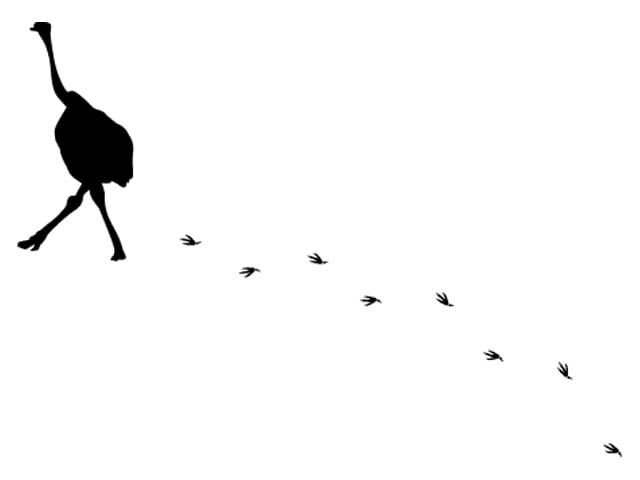
Pakistan Ostrich Company’s (POC) “Farms of Future” are seeking farmers who either wish to start their own farms for ostrich breeding or want to invest in cooperative farming. So far, they have succeeded in supplying ostriches to 40 farms in the entire country.
It was as early as 1999 when a few Pakistani enterprises started importing ostriches, POC chief executive officer Raja Tahir Latif told The Express Tribune. They failed, however, to continue providing technical education and support to the farmers who had invested in ostrich farming through them, he added.
According to Latif, ostrich farming in Pakistan is difficult mainly because the practice is not recognised by the government. The Iranian government supports the import of adult ostriches which helps reproduction and that is the reason why Iran has emerged as a giant in ostrich production.
POC started importing ostrich chicks, aged between three weeks and three months, but the business could not thrive, said Latif. Pakistan Customs levies an import duty on ostrich chicks as they are still considered exotic birds and not livestock. Even though federal livestock secretary Khwaja Siddique Akbar has agreed to count ostrich as livestock, the import duty is still intact, he added.
Commercial farming of ostriches in Pakistan began in 2008 but the total number of these birds is still limited to 2,000, said Latif. His company demanded the government include the ostrich in the livestock category without issuing any funds, but to no avail.
Latif believes that ostrich farming can only become profitable if the number of ostriches available reaches at least 10,000. Ostriches can then be used in several industries, such as food, leather and its by-products. The leather obtained from ostriches also has a high market value as it is soft and durable, he added.
Ostrich meat can be sold for Rs250 per kilogramme (kg), which is cheaper than veal, he added. A year-old ostrich weighs around 100 kg and it can weigh up to 250 kg when it reaches the age of two. Due to this, Latif believed that ostrich farming for meat can solve the country’s nutrition needs.
The Feed Conversion Ratio, which measures an animal’s efficiency in converting feed mass into increased body mass, is much better in ostriches as compared to other species of livestock, said Latif.
The POC is importing the “Black African” species of the Grand Parent type, which tops any other as it has a high potential for continuous onward reproduction. For commercial farming, Black African ostriches are recommended due to their high survival rates and more than a hundred countries have already started farming them.
According to Latif, South Africa started ostrich farming around two centuries ago and later Australia became the top breeding nation to export ostriches across the globe. The Gulf states and Saudi Arabia have already established huge farming networks and Israel is the second largest breeder in the world that has overcome its meat and leather demands. Iran also stands as the third largest producer of ostriches.
Listing the benefits of the bird, Latif said that ostrich dung makes it one of the choicest fish feed while its fat contains oil that has healing properties for bone and joint ailments. Ostrich meat is very low in fats and cholesterol and it tastes better than mutton, he added. Farmers can obtain a two-kilogramme ostrich egg for somewhere between Rs2,000 and Rs4,000 but it becomes very hard to hatch these eggs in Pakistan due to temperature variations. It is more profitable for farmers to import three-week to three-month-old chicks but the mortality rate is much higher before the age of three months, Latif warned.
Those who are interested in establishing an ostrich farm can use three-month old ostrich chicks that can survive in extreme temperatures, between minus 30 degrees Celsius to 56 degrees Celsius. Ostriches can live up to the age of 70 and it starts laying eggs from two years. On average, an ostrich lays around 100 eggs a season. The mating season that suits ostriches is summer.
design: samad siddiqui
Published in The Express Tribune, December 20th, 2010.

















COMMENTS
Comments are moderated and generally will be posted if they are on-topic and not abusive.
For more information, please see our Comments FAQ